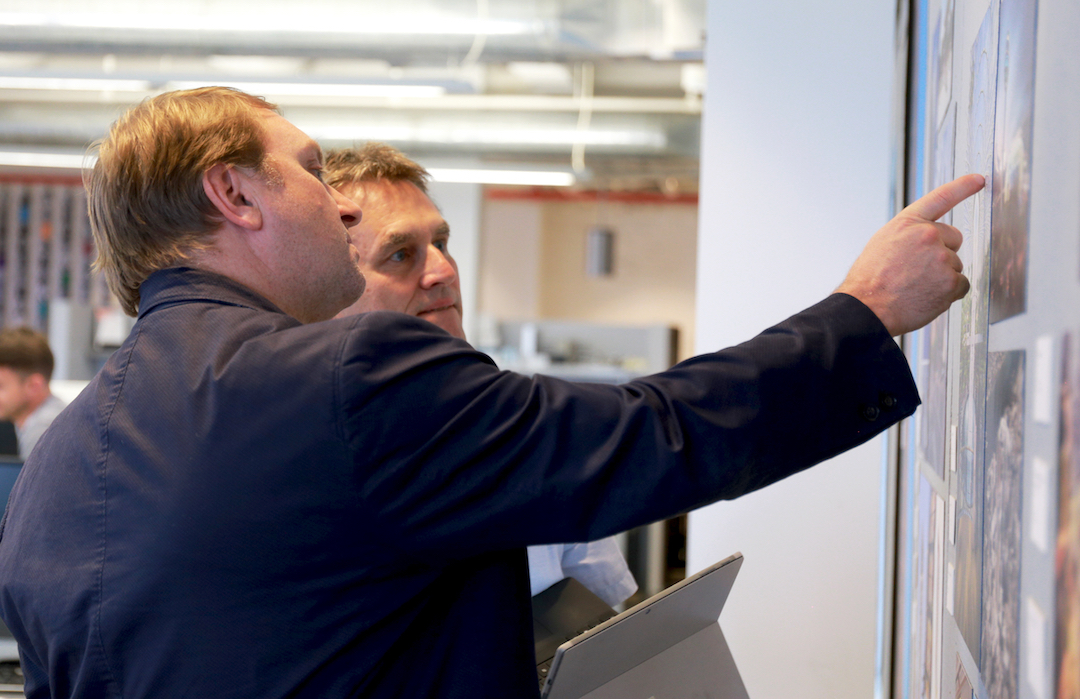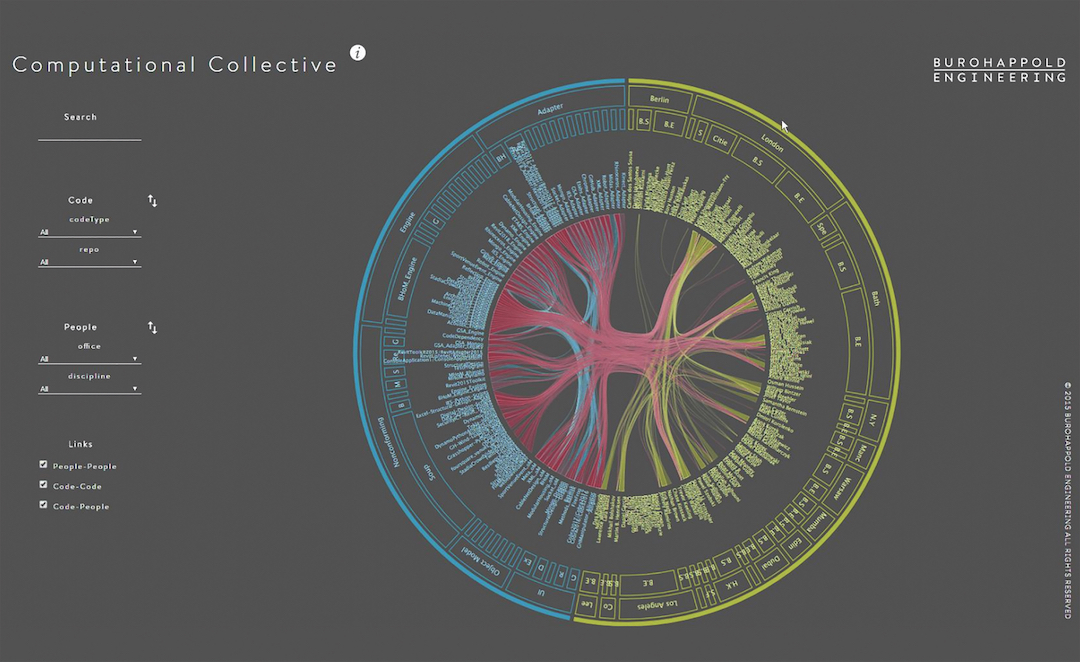Four years ago, at one of its technology gatherings, the engineering firm BuroHappold concluded that “we weren’t connected enough as a company,” recalls Craig Schwitter, PE, a Partner who has been with the firm since 1992 and leads its multidisciplinary projects.
To take advantage of available communications tools, Buro Happold formed its Computational Collective, which Schwitter says presents the firm’s employees with “a different way of thinking and working.”
Buro Happold's feedback loop
The Collective now has 400 members across all of the firm’s practices and offices. “It’s a way of democratizing technology, and all you have to do to be in the Collective is to contribute to it,” says Schwitter.
Where the Collective is about encouraging employees to interact, BuroHappold has also recently established a data exchange framework BHoM (for Buildings & Habitats object Model), which Schwitter says emerged from the Collective and allows for practical interfaces among teams. Last year, the firm unveiled its open-source website, BHoM.xyz.
BuroHappold has been moving in this collaborative direction for a while. One of its recent signature projects—the 1.4 million-sf retail and lifestyle complex at Jewel Changi Airport in Singapore, with its 131-foot-tall indoor rain vortex that pours from an oculus within a glass-domed roof—required the engagement of several of the firm’s offices, including New York, Boston, London, and Hong Kong. Schwitter agrees that this project could be viewed as a precursor to the Collective.
SEE ALSO: Clayco seeks the cutting edge as a competitive advantage
The ultimate goal of these changes, he says, is a process for tracking, measuring, and predicting human behavior for the purpose of designing and engineering better buildings. “How do you measure happiness, wellness? We see a future where we can measure the human experience. That’s like a light bulb going off for an engineer, and it’s a very motivating concept for me. But without data, we wouldn’t be able to even ask these questions.”
Innovations include digital twins for hospitals
Schwitter says BuroHappold is “very close” to being able to create digital twins for hospitals and other building types that incorporate human behavioral data. And one of Schwitter’s colleagues, Wolf Mangelsdorf, a Group Director and Partner with the firm, has formulated a “science of place” design strategy to multifamily housing, in what he calls “Wechselwirkungen.”
The intent is to reconcile design models and “interventions” that stem from community input with occupant and community needs, to create a continuous feedback loop that would define the criteria for deciding which design will works best.
 Craig Schwitter, PE (at left), a Partner, says the Computational Collective has changed the way people within the firm communicate and work together. Photo: Buro Happold
Craig Schwitter, PE (at left), a Partner, says the Computational Collective has changed the way people within the firm communicate and work together. Photo: Buro Happold

Related Stories
AEC Business Innovation | Sep 28, 2021
Getting diversity, equity, and inclusion going in AEC firms
As a professional services organization built on attracting the best and brightest talent, VIATechnik relies on finding new ways to do just that. Here are some tips that we’ve learned through our diversity, equity, and inclusion (DE&I) journey.
Architects | Aug 5, 2021
Lord Aeck Sargent's post-Katerra future, with LAS President Joe Greco
After three years under the ownership of Katerra, which closed its North American operations last May, the architecture firm Lord Aeck Sargent is re-establishing itself as an independent company, with an eye toward strengthening its eight practices and regional presence in the U.S.
AEC Tech | Jan 28, 2021
The Weekly show, Jan 28, 2021: Generative design tools for feasibility studies, and landscape design trends in the built environment
This week on The Weekly show, BD+C editors speak with AEC industry leaders from Studio-MLA and TestFit about landscape design trends in the built environment, and how AEC teams and real estate developers can improve real estate feasibility studies with real-time generative design.
AEC Tech | Nov 12, 2020
The Weekly show: Nvidia's Omniverse, AI for construction scheduling, COVID-19 signage
BD+C editors speak with experts from ALICE Technologies, Build Group, Hastings Architecture, Nvidia, and Woods Bagot on the November 12 episode of "The Weekly." The episode is available for viewing on demand.
Smart Buildings | Oct 26, 2020
World’s first smart building assessment and rating program released
The SPIRE Smart Building Program will help building owners and operators make better investment decisions, improve tenant satisfaction, and increase asset value.
Smart Buildings | Oct 1, 2020
Smart buildings stand on good data
The coming disruption of owning and operating a building and how to stay ahead through BIM.
University Buildings | Jun 3, 2020
Renovation can turn older university buildings into high-performing labs
David Miller of BSALifeStructures offers technical advice on renovation of college and university laboratories and scientific research facilities.
Green | Mar 9, 2020
BuroHappold commits to all new building projects achieving net-zero carbon by 2030
The engineering firm also launched a long-term partnership with ILFI.
AEC Innovators | Mar 5, 2020
These 17 women are changing the face of construction
During this Women in Construction Week, we shine a spotlight on 17 female leaders in design, construction, and real estate to spur an important conversation of diversity, inclusion, and empowerment.
AEC Innovators | Aug 27, 2019
7 AEC industry disruptors and their groundbreaking achievements
From building prefab factories in the sky to incubating the next generation of AEC tech startups, our 2019 class of AEC Innovators demonstrates that the industry is poised for a shakeup. Meet BD+C’s 2019 AEC Innovators.

















